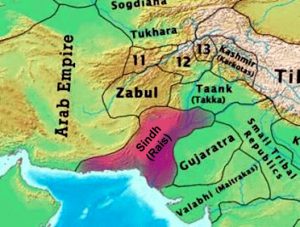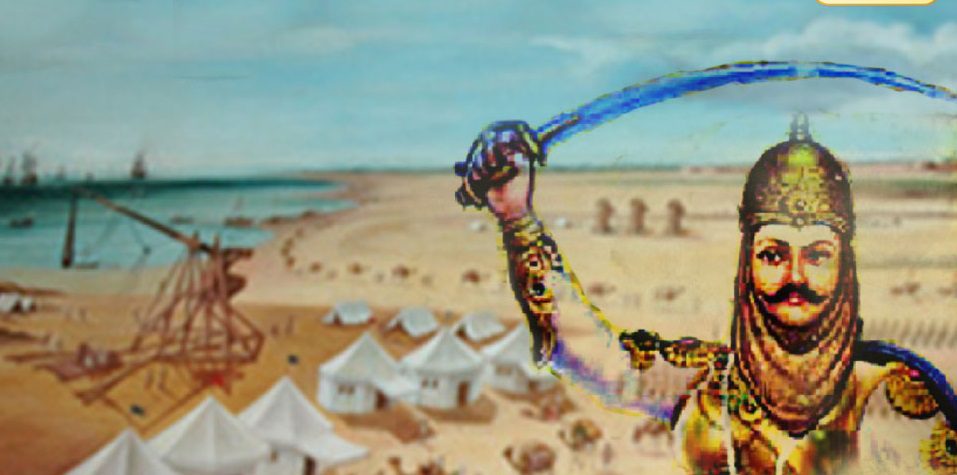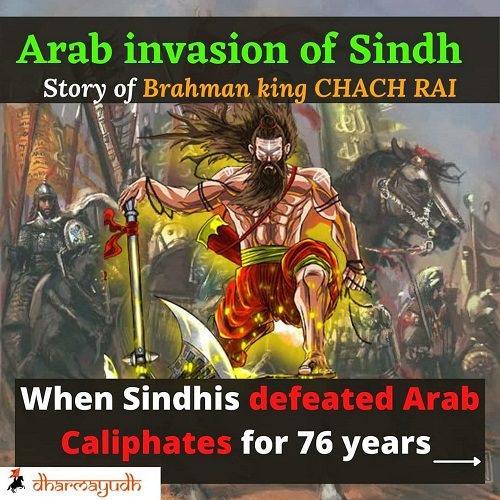From ancient times, the Indian Sub-continent had witnessed countless invasions from central Asia and other regions. Whether big or small these invasions were the result of the expansionist’s policies of these invaders. One by one year after year the northwestern frontier of our country witnesses countless waves of invasions. Whether the Greeks under Alexander, Kushans of north-central Asia, or the Scythians all were able to establish their supremacy over the northwestern region of India.
This is the story of those forgotten warriors who bravely repulsed the Arab invasion and protected the kingdom of Sindh from crumbling.
However, these settlements couldn’t last long and the Indians gradually pushed them back. But during the 7th century, another powerful threat emerged from the Middle East. They were Arabs who forged an immense kingdom that not only challenged the Byzantine and Sassanid Empire but also established its rule over parts of North Africa, Central Asia, and even in Europe.
Content
Rise of Arabs
Prophet Muhammad (570-610) attained enlightenment at the age of 40 and after him, the charge of protecting and preaching this new Monotheism faith was taken by the Caliphs or Khalifah.
Expansion of Arabs
The Rashidun Caliphate was the Caliphate of the Islamic empire. The period of the first four caliphs i.e. from 634-661 is considered the Golden Age of Islam.
First Caliph was Abu Bakr (573-634) restored the authority of Medina over the various Arab tribes. After him, Umar (584-644) became the Khalifah. He is given the credit for the rapid expansion of Islam. The third and fourth Caliphs were Uthman ibn (583-656) and Ali ibn (601-661).
The hot and tough climate gave the Arabs an advantage over their fellow rivals like the Byzantine and the Sassanid. Due to the superiority of the Arab horses and camels the mobility of these people could not be challenged by their neighboring kingdoms.
Furthermore, their religious zeal also helped them in several conquests. In 635 CE the Arabs after a 6-month siege captured Damascus from the Byzantine which was one of the most powerful kingdoms of the world.
Later in 635-636, they captured the whole of Syria and in 637 CE they marched against the Sassanid Empire and subjugated the whole empire in 643 CE. These were some of the biggest achievements of the Arabs that made them dominant hordes in the Middle East. In 640- 641 CE another charismatic Arab general marched towards North Africa and captured the ancient city of Alexandria.

Image source: Wikipedia
So all in all the Arabs enjoyed plenty of success wherever they went. Their conquest resulted in the Islamization of these conquered territories. These Arab warlords now touched the ancient borders of India and now the warriors of Maa Bharti were ready to meet the wrath of the Arabian hordes.
Arab Invasion of Sindh: Resistance of the Sindhis
Note: Do you know that in the year 636 the Arabs sent a naval expedition on the coast of Thane. The primary aim behind this ambitious plan was to conquer this land. However, this expedition resulted in a failure.
Drawing the motivation from the above mention point the Arabs again sent two naval expeditions
1 At Bharuch in 643
2 At Debal in Sindh (first invasion of Arab on Sindh)
But again these two expeditions again resulted in a failure. These three failed expeditions haven’t caught any attention of eminent historians which for decades presented the Indian kings as a defeat specialist.

The Kingdom of Sindh.
According to Chachnamah the ruler of Sindh was a Brahman during the first naval expedition of Arabs on Sindh (at Debal). Although historians had given different names to this king who resisted this attack. But according to Chachnamah, his name was Chach Rai.
So Chach Rai was the first Indian king who repulsed the early Arab invasion.
According to Chachnamah

Chach Rai the ruler of Sindh was an efficient and vigorous ruler who extended his kingdom to the borders of Kashmir and to the sea of Debal.
Arab Invasion of Sindh
The expedition was launched during the reign of Caliph Umar. The commander of the Arab army was al-Mughirah. When the Arabs launched an assault on Debal, the king of the region came out from his fort and inflicted heavy casualties on the invaders. The leader of the Arab forces i.e. al-Mughirah was killed during this engagement and the battle resulted in defeat for the Arabs.
When the news of this disaster reached Caliph Umar he immediately sent another expedition on Sindh this time via land and with more ferocity. But the governor of Iraq Abu Musa gave a sage advice to Umar and told him that the land of Sindh is ruled by an adamant king who can defy our ambitions. Keeping this in mind the Abu Musa advised Umar to give up the idea of Sindh.
Note that this was the time when the Arabs were at their peak and were inflicting defeats on their enemy’s everywhere.

In the year 660 CE the Arabs once again decided to invade Sindh. This time the Caliph Ali sent the expedition via land as planned by his former Caliph Umar several years back. The Arabs this time was under Haras or Haris but when the Arab soldiers reached at Kikan, which was at located in the central division of Sindh kingdom the people of the country inflicted heavy casualties on the Muslim Army and the attack was once again repulsed. …………….According to Chahnamah……………….
During the Caliphate of Mu’awiya ibn Abi Sufiya who reigned from 661- 680 CE, the Arabs launched six invasions one after the other for the conquest of Kikan. But yet again all these 6 attempts resulted in a failure. Here again, Chachnamah tells us that Mu’awiya sent an army of 4000 men under Sawad.
Note: Do you know that there was another kingdom who crossed swords with the Arabs and then with the Turks. this kingdom was known as the Hindu Shahi kingdom which was located at Kabul.
Read Here: Forgotten Hindu Shahi Kingdom of Afghanistan
When the Arabs arrived at Kikan the people charged at them. Both sides suffered heavy losses. But in the end, the Arab came out victorious and also captured the wealth of the region.
But after some time the people of Kikan again picked up arms against the invaders and blocked all the mountain passes. The people of Kikan now launched their final attack on the Arab invaders due to which the latter were forced to retreat.
So again the attack on Sindh was repulsed by the Indians. But in the year 680, the Arabs were able to establish their stronghold in the Makran area. After decades of fierce battles, the Arabs were able to secure only the Makran region and even this territory was vulnerable.
From the year 643 CE to 680 CE the Arabs conquered Syria from Byzantine Empire, defeated the Sassanid’s, marched on North Africa, and even initiated to spread their influence over central Asia. But the land of India and its warriors sealed their faith.
After 680 CE the Arabs gave up all their ambitions of conquering and introducing their faith on the Indian subcontinent for the next 28 years. This was the first part of the Arab invasion. The second wave of the Arab has launched in the year 708 CE by Al Hajaj the governor of Iraq. Stay connected as in the second wave this resistance was continued by the Indians. We will cover this in our next part.
However, our own historians didn’t appreciate this heroic resistance put up by the Indian people it’s now up to us to tell the young generation that our ancestors had not only won decisively but also fought till their last breath for protecting this country.
LIKE WHAT WE ARE DOING? DONATE TO DHARMAYUDH !
If you Support what we are doing and would like to contribute to help us grow and reach more Indians to teach them more about such forgotten historic Indian Heroes and stories, please consider donating any amount. It will help us grow

